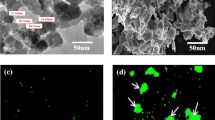Abstract
The feasibility of zinc oxide-catalyzed esterification of natural phytosterols with oleic acid was investigated well by a chemical process. The influences of various reaction parameters were evaluated. Basic solid zinc oxide is the most desirable catalyst due to its high selectivity (more than 90%), reusability, activity and less corrosivity, whereas sterol selectivity with other catalysts, such as H2SO4, NaHSO4 and NaOMe, did not exceed 80%. Further results showed that during zinc oxide-catalyzed synthesis, the nature of the acyl donor was of paramount importance with direct esterification with fatty acids, which gives better results with higher conversion rate selectivity and more mild reaction conditions than transesterification with methyl esters. The substrate molar ratio of 2:1 (oleic acid/phytosterol) was optimal. Other parameters such as optimal catalyst load (0.5%) and temperature (170 °C) showed a maximum production of steryl esters close to 98% after 8 h. It was also found that the amount of trans fatty acid formed in esterification was low, and the trans fatty acid content (%) in the phytosterol oleate ester fraction (3.26%) was much lower than that in free oleic oil (7.35%), which suggested that fatty acids in esters were more stable than free fatty acids regarding the combination with sterol. Immobilized ZnO could be a promising catalyst for replacing homogeneous and corrosive catalysts for esterification reactions of sterol.






Similar content being viewed by others
References
Institute of Food Science and Technology Trust Fund Information Statement. Phytosterol Esters (Plant Sterol and Stanol Esters). http://www.ifst.org (Jan 2010)
Trautwein EA, Guus SM, Duchateau JE, Lin YG (2003) Proposed mechanisms of cholesterol-lowering action of plant sterols. Eur J Lipid Sci Technol 105:171–185
Kim BH, Akoh CC (2007) Modeling and optimization of lipase-catalyzed synthesis of phytosteryl esters of oleic acid by response surface methodology. Food Chem 102:336–342
Negishi S, Hidaka I, Takahashi I (2003) Transesterification of phytosterol and edible oil by lipase powder at high temperature. J Am Oil Chem Soc 80:905–907
Akashe A, Miller M (2001) Use of mesophase-stabilized compositions for delivery of cholesterol-reducing sterols and stanols in food products. US Patent 6,274,574
Burruano B, Bruce RD, Hoy MR (2000) Method for producing water dispersible sterol formulations. US Patent 6,110,502
Weber N, Weitkamp P, Kumar DMJ (2002) Cholesterol-lowering food additives: lipase-catalysed preparation of phytosterol and phytostanol esters. Food Res Int 35:177–181
Vu PL, Shin JA, Lim CH, Lee KT (2004) Lipase-catalyzed production of phytosteryl esters and their crystallization behavior in corn oil. Food Res Int 37:175–180
Villeneuve P, Turon F, Caro Y, Escoffier R, Barea B, Barouh B, Lago R, Piombo G, Pina M (2005) Lipase-catalyzed synthesis of canola phytosterols oleate esters as cholesterol lowering agents. Enzyme Microb Technol 37:150–155
Pouilloux Y, Courtois G, Boisseau M, Piccirilli A, Barrault J (2003) Solid base catalysts for the synthesis of phytosterol esters. Green Chem 5:89–91
Meng XH, Sun PL, Pan QY, Shi ZP, Yang K, He RJ (2006) Synthesis of plant sterol esters catalyzed by heteropolyacid in a solvent-free system. Eur J Lipid Sci Technol 108:13–18
Valange S, Beauchaud A, Barrault J, Gabelica Z, Daturi M, Can F (2007) Lanthanum oxides for the selective synthesis of phytosterol esters: correlation between catalytic and acid–base properties. J Catal 0:1–10
Dutta PC, Przybylski R, Eskin NA, and Appelqvist LÅ (2007) Formation and analysis and health effects of oxidized sterols in frying fats. In: Erickson MD (ed) deep frying: practices, chemistry and nutrition. AOCS Press, IL, pp 125–178
Hovenkamp E, Demonty I, Plat J, Lutjohann D, Mensink RP, Trautwein E (2008) Biological effects of oxidized phytosterols: a review of the current knowledge. Prog Lipid Res 47:37–49
Dobarganes C, Marquez-Ruiz G (2003) Oxidized fats in foods. Curr Opin Clin Nutr Metab Care 6:157–163
David F (1997) Official methods and recommended practices of the AOCS, 5th edn. American Oil Chemists’ Society Champaign, Illinois, USA, Ce2-66
Ledoux M, Laloux L, Wolff RL (2000) analytical methods for determination of trans-C18 fatty acid isomers in milk fat. Analusis 28:402–412
Jekel AA, Vaessen HAMG, Schothorst RC (1998) Capillary gas-chromatographic method for determining non-derivatized sterols—some results for duplicate 24 h diet samples collected in 1994. Fresenius J Anal Chem 360:595–600
Gutierrez A, Romero J, del Rio JC (2001) Lipophilic extractives in process waters during manufacturing of totally chlorine free kraft pulp from eucalypt wood. Chemosphere 44:1237–1242
Chen M, Wang X, Yu YH, Pei ZL, Bai XD, Sun C, Huang RF, Wen LS (2000) X-ray photoelectron spectroscopy and auger electron spectroscopy studies of Al-doped ZnO films. Appl Surface Sci 158:134–140
León CM, Alvarez SM, Graciani CE (2004) Formation of Stigmasta-3, 5-diene in olive oil during deodorization and/or physical refining using nitrogen as stripping gas. Grasasy Aceites 55:227–232
Soupas L, Huikko L, Lampi A, Piironen V (2005) Esterification affects phytosterol oxidation. Eur J Lipid Sci Technol 107:107–118
León CM, Ruiz MMV, Graciani CMM, Graciani CE (2001) Kinetics the Cis-trans isomerization of linoleic acid in the deodorization and/or physical refining of edible fats. Eur J Lipid Sci Technol 103:85–92
Acknowledgments
This investigation was supported by Zhejiang Science and Technology Department of Zhejiang Province of P.R. China (2007C32024, 2009C31140).
Author information
Authors and Affiliations
Corresponding author
About this article
Cite this article
Meng, X., Pan, Q. & Yang, T. Synthesis of Phytosteryl Esters by Using Alumina-Supported Zinc Oxide (ZnO/Al2O3) from Esterification Production of Phytosterol with Fatty Acid. J Am Oil Chem Soc 88, 143–149 (2011). https://doi.org/10.1007/s11746-010-1654-2
Received:
Revised:
Accepted:
Published:
Issue Date:
DOI: https://doi.org/10.1007/s11746-010-1654-2




